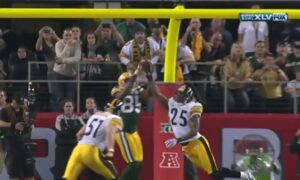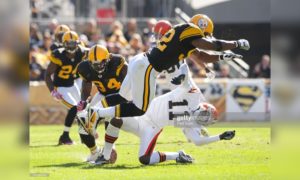The Pittsburgh Steelers’ season ended a few weeks earlier that they had planned it to, but now that their 2015 campaign has drawn to a conclusion, it’s time to wrap things up and take stock of where they are and how they got there. Part of that process involves holding player exit meetings at the conclusion of each season.
Of course, we’re not privy to the specifics that go on in each of these meetings between head coach and player, and whomever else might be involved in any particular discussion, but if we were conducting them, it might go something like this.
Player: Mike Mitchell
Position: Safety
Experience: 7 Years
The Steelers signed Mike Mitchell in 2014 to a five-year, $25 million contract to be a core, impact player at the back end of the defense. They didn’t really get a whole lot of that out of him in his first season in Pittsburgh, though he did manage two forced fumbles.
It was revealed after the season that the veteran safety had played through the year with two tears in his groin, which he acknowledged affected his play, but he maintained that the team need him in the game, especially with Troy Polamalu in and out of the lineup.
But never mind that, that stuff is all in the past. 2015 saw the Steelers getting the Mike Mitchell they thought they had drafted, in which he emerged as one of the team’s best defenders, and clearly the best player coming out of the secondary. Not only was he consistent, he was also impactful.
Mitchell posted a career-high 80 tackles, sure, but most importantly, he recorded three interceptions, including not one but two picked off in the end zone, both against division opponents, and he also forced two fumbles. He then proceeded to recover two additional fumbles, making him involved in seven total turnovers. He nearly recovered a third fumble and scored, but he failed to re-establish himself inbounds before touching the ball.
Aside from his impact from a splash play standpoint, he also took an important step forward in coverage, as indicated by his career-best nine pass deflections. He was particularly effective in the red zone, where several of those deflections were recorded.
He is a bit hitter and a tone-setter for the defense, part of the emotional nucleus of the team around which so much of their identity is built, and from which they draw. He plays with emotion, much like Ryan Clark did before him, and as with Clark, it draws mixed reviews from both inside the fan base and outside.
But he plays true to himself, and that is a good player who has become an important part of this defense, especially given the tumultuous jumbling of players around him in the secondary over the past two years. We also already know well that he is willing to play through injury, as he did again this year with an injured shoulder, starting 32 out of 32 games in his tenure in Pittsburgh.








